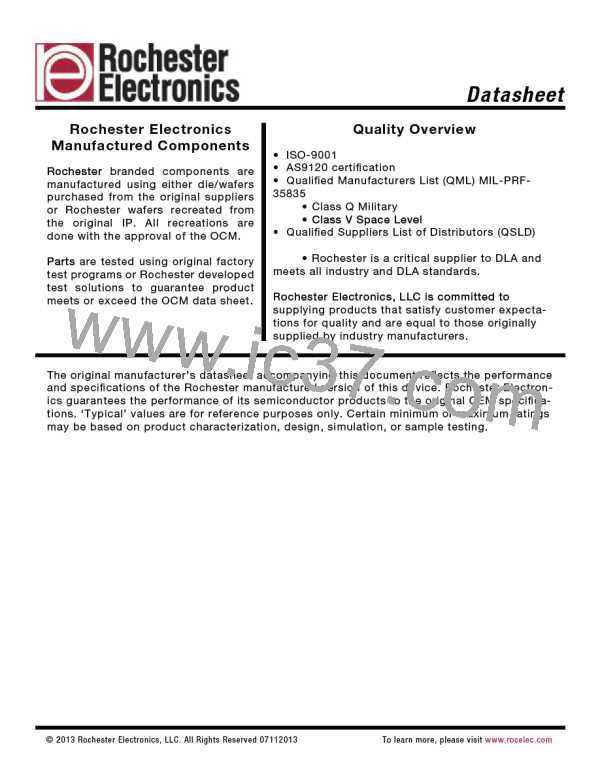AD8510/AD8512/AD8513
GENERAL APPLICATION INFORMATION
INPUT OVERVOLTAGE PROTECTION
0.01
V
R
= ±5V
= 100kΩ
SY
L
The AD8510/AD8512/AD8513 have internal protective
circuitry that allows voltages as high as 0.7 V beyond the
supplies to be applied at the input of either terminal without
causing damage. For higher input voltages, a series resistor is
necessary to limit the input current. The resistor value can be
determined from the formula
BW = 22kHz
0.001
VIN −VS
≤ 5 mA
RS
With a very low offset current of <0.5 nA up to 125°C, higher
resistor values can be used in series with the inputs. A 5 kΩ
resistor protects the inputs from voltages as high as 25 V
beyond the supplies and adds less than 10 μV to the offset.
0.0001
20
100
1k
10k 20k
FREQUENCY (Hz)
Figure 42. THD + N vs. Frequency
TOTAL NOISE INCLUDING SOURCE RESISTORS
OUTPUT PHASE REVERSAL
The low input current noise and input bias current of the
AD8510/AD8512/AD8513 make them the ideal amplifiers for
circuits with substantial input source resistance. Input offset
voltage increases by less than 15 nV per 500 Ω of source
resistance at room temperature. The total noise density of the
circuit is
Phase reversal is a change of polarity in the transfer function of
the amplifier. This can occur when the voltage applied at the
input of an amplifier exceeds the maximum common-mode
voltage.
Phase reversal can cause permanent damage to the device and
can result in system lockups. The AD8510/AD8512/AD8513 do
not exhibit phase reversal when input voltages are beyond the
supplies.
2
2
enTOTAL
where:
=
en
+
in RS
)
+ 4kTRS
V
= ±5V
SY
en is the input voltage noise density of the parts.
in is the input current noise density of the parts.
RS is the source resistance at the noninverting terminal.
k is Boltzmann’s constant (1.38 × 10–23 J/K).
A
V
R
L
= 1
= 10kΩ
V
OUT
T is the ambient temperature in Kelvin (T = 273 + °C).
For RS < 3.9 kΩ, en dominates and enTOTAL ≈ en. The current noise
of the AD8510/AD8512/AD8513 is so low that its total density
does not become a significant term unless RS is greater than
165 MΩ, an impractical value for most applications.
V
IN
The total equivalent rms noise over a specific bandwidth is
expressed as
TIME (20µs/DIV)
enTOTAL = enTOTAL BW
Figure 41. No Phase Reversal
where BW is the bandwidth in hertz.
TOTAL HARMONIC DISTORTION (THD) + NOISE
Note that the previous analysis is valid for frequencies larger
than 150 Hz and assumes flat noise above 10 kHz. For lower
frequencies, flicker noise (1/f) must be considered.
The AD8510/AD8512/AD8513 have low THD and excellent gain
linearity, making these amplifiers great choices for precision
circuits with high closed-loop gain and for audio application
circuits. Figure 42 shows that the AD8510/AD8512/AD8513 have
approximately 0.0005% of total distortion when configured in
positive unity gain (the worst case) and driving a 100 kΩ load.
Rev. I | Page 13 of 20

 ROCHESTER [ Rochester Electronics ]
ROCHESTER [ Rochester Electronics ]